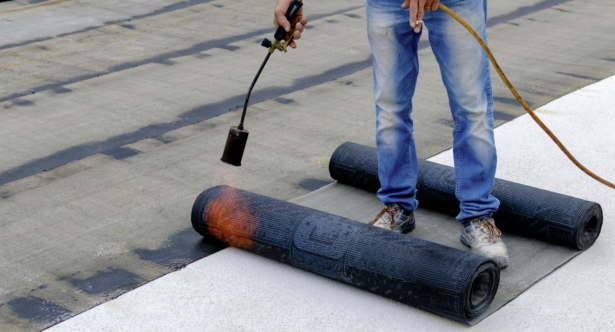Waterproofing is a critical consideration in construction to protect structures from the damaging effects of water infiltration. When it comes to waterproofing membranes, two primary options dominate the market: sheet membranes and liquid membranes. Each type has its unique advantages and applications. In this article, we’ll explore the characteristics, pros, and cons of sheet and liquid waterproofing membranes to help you make an informed decision for your construction project.
Sheet Waterproofing Membranes:
Sheet membranes are pre-manufactured waterproofing materials typically made of materials like bitumen, PVC, TPO, or EPDM. They come in rolls or sheets and are applied to surfaces, providing a continuous barrier against water penetration.
Pros:
- Ease of Installation: Sheet membranes are generally easier to install, especially for large, flat surfaces. They can be quickly rolled out and adhered to the substrate, reducing installation time.
- Durability: Sheet membranes often exhibit high durability and resistance to punctures and damage during construction activities.
- Consistency: The manufacturing process of sheet membranes ensures uniformity in thickness and composition, providing a consistent level of waterproofing across the entire surface.
Cons:
- Limited Flexibility: Sheet membranes may not be as flexible as their liquid counterparts, making them less suitable for irregular or contoured surfaces.
- Seam Vulnerability: Although advancements have reduced this issue, seams in sheet membranes can be vulnerable points, and proper installation is crucial to ensure water-tightness.
Liquid Waterproofing Membranes:
Liquid membranes are applied as a liquid and cure to form a seamless, continuous waterproofing layer. They are typically made from bitumen, polymers, or polyurethane.
Pros:
- Versatility: Liquid membranes are highly versatile and can conform to various shapes and surfaces, making them suitable for complex geometries and irregular substrates.
- Seamless Coverage: Liquid membranes provide a seamless, monolithic barrier without the vulnerability of seams, reducing the risk of water penetration.
- Ease of Repairs: In the event of damage, liquid membranes are often easier to repair. Additional layers can be applied to specific areas without the need to replace an entire sheet.
Cons:
- Application Complexity: Applying liquid membranes may require more expertise and attention to detail during installation to ensure an even coating and proper curing.
- Curing Time: Liquid membranes typically require sufficient curing time before they can be exposed to the elements or covered with additional construction materials.
Choosing between sheet and liquid waterproofing membranes depends on various factors, including the project’s requirements, substrate characteristics, and the expertise of the applicator. Sheet membranes offer simplicity and durability, while liquid membranes provide versatility and seamless coverage. Ultimately, a careful evaluation of your specific project needs will guide you to the most suitable waterproofing solution. Whether you opt for the straightforward application of sheet membranes or the adaptability of liquid membranes, investing in effective waterproofing is a crucial step towards ensuring the longevity and resilience of your construction project.

